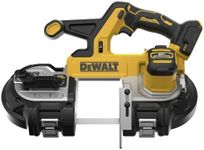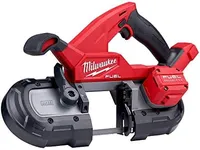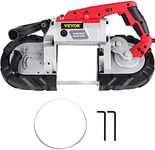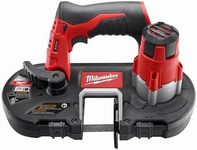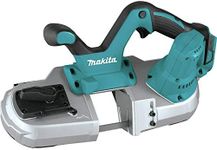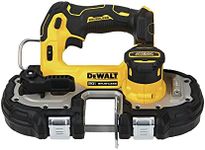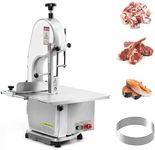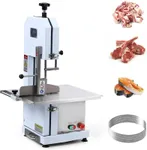Buying Guide for the Best Portable Band Saw
Choosing the right portable band saw can make a significant difference in your cutting tasks, whether you're a professional or a DIY enthusiast. A portable band saw is a versatile tool that can cut through various materials like metal, wood, and plastic. To find the best fit for your needs, it's essential to understand the key specifications and how they impact the tool's performance. Here are the main specs to consider when selecting a portable band saw.Blade SizeThe blade size of a portable band saw refers to the length, width, and thickness of the blade. This spec is important because it determines the type of materials you can cut and the precision of the cuts. Blade sizes can vary, with longer blades being suitable for larger, thicker materials and shorter blades for smaller, more detailed work. If you plan to cut a variety of materials, look for a saw that can accommodate different blade sizes.
Cutting CapacityCutting capacity indicates the maximum size of the material that the saw can cut. This is usually measured in terms of the width and depth of the cut. A larger cutting capacity allows you to work with bigger pieces of material. If you frequently work with large pipes or beams, a saw with a higher cutting capacity will be more suitable. For smaller, more intricate projects, a lower cutting capacity may suffice.
Motor PowerMotor power, measured in amps or volts, determines the saw's cutting strength and speed. A more powerful motor can handle tougher materials and make faster cuts. If you need to cut through thick metal or hardwood, a higher-powered motor will be beneficial. For lighter tasks, a less powerful motor will be adequate and may offer better control and precision.
Speed SettingsSpeed settings refer to the number of speed options available on the saw, usually measured in feet per minute (FPM). Variable speed settings allow you to adjust the cutting speed based on the material you're working with. Higher speeds are suitable for softer materials like wood, while lower speeds are better for harder materials like metal. If you work with a variety of materials, a saw with adjustable speed settings will provide greater versatility.
Weight and PortabilityThe weight of the portable band saw affects its ease of use and portability. Lighter saws are easier to handle and maneuver, making them ideal for overhead or extended use. Heavier saws may offer more stability and power but can be cumbersome to carry around. Consider how often you'll need to move the saw and the types of projects you'll be working on to determine the right balance between weight and portability.
Durability and Build QualityDurability and build quality are crucial for ensuring the longevity and reliability of your portable band saw. Look for saws made from high-quality materials like steel or aluminum, which can withstand heavy use and harsh conditions. Features like rubber grips and protective guards can also enhance durability and user comfort. If you plan to use the saw frequently or in demanding environments, investing in a well-built, durable model is essential.
Additional FeaturesAdditional features such as LED work lights, adjustable handles, and tool-free blade changes can enhance the usability and convenience of a portable band saw. LED lights improve visibility in low-light conditions, adjustable handles provide better ergonomics, and tool-free blade changes make maintenance quicker and easier. Consider which features will be most beneficial for your specific needs and preferences.
